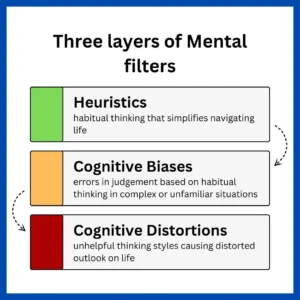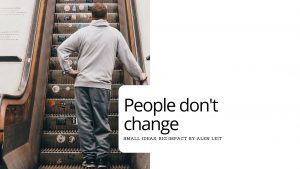I found a new illustration of tragedy – an entrepreneur with social anxiety…
An occupation that resembles being extroverted, engaging in all sorts of social activities and building new connections, falls on an individual that does everything to avoid it.
The irony of genuine desire to do their own thing, but not wanting to “deal with people” whatever it may mean for them.
How surprised and not surprised at the same time I was to discover social anxiety in myself after over 5 years of trial and error of building my businesses.
An interesting fact it’s SAD.
An acronym they developed that stands for Social Anxiety Disorder.
SAD affects at least 189 million people worldwide among all ages. One study showed that SAD affects 1 of 3 adults aged (25 – 29). That means among OECD countries that’s around 28 million adults aged (25 – 29).
According to the DSM-5, (Diagnostic and Statistical Manual of Mental Disorders, fifth edition), these are the diagnostic criteria for Social Anxiety disorder:
- fear or anxiety specific to social settings, in which a person feels noticed, observed, or scrutinized.
- In an adult, this could include a first date, a job interview, meeting someone for the first time, delivering an oral presentation, or speaking in a class or meeting.
- In children, the phobic/avoidant behaviors must occur in settings with peers, rather than adult interactions, and will be expressed in terms of age appropriate distress, such as cringing, crying, or otherwise displaying obvious fear or discomfort.
- typically, the individual will fear that they will display their anxiety and experience social rejection,
- social interaction will consistently provoke distress,
- social interactions are either avoided, or painfully and reluctantly endured,
- the fear and anxiety will be grossly disproportionate to the actual situation, the fear, anxiety or other distress around social situations will persist for six months or longer and
- cause personal distress and impairment of functioning in one or more domains, such as interpersonal or occupational functioning,
- the fear or anxiety cannot be attributed to a medical disorder, substance use, or adverse medication effects or another mental disorder, and
- if another medical condition is present which may cause the individual to be excessively self-conscious- e.g., prominent facial scar, the fear and anxiety are either unrelated, or disproportionate.
- The clinician may also include the specifier that the social anxiety is performance situation specific – e.g., oral presentations (American Psychiatric Association, 2013).
Even though SAD is a mental health challenge that needs to be addressed with a psychotherapist, there are ways to support yourself in addition to it.
Two main ways I discover to support yourself are using Cognitive Behavioral Therapy methods for self-help and building a supportive surrounding that will help you move through anxiety despite it being present.
My luck that everything I did in the last 5 years was directed at helping people with personal and business development. As well as being married to a psychotherapist.
Now I can focus on catching two rabbits at once. Helping myself overcome social anxiety and support other entrepreneurs with overcoming it.
I’m in the process of bringing together several groups of entrepreneurs who love what they do but need support to get through the challenges of social anxiety.
I believe you know someone who is working hard to build their business yet finds themselves without proper support.
Please share my post it can support someone you know.
Social anxiety in young people: A prevalence study in seven countries
American Psychiatric Association. (2013). Diagnostic and Statistical Manual of Mental Disorders. (5th Edition). Washington, DC.








